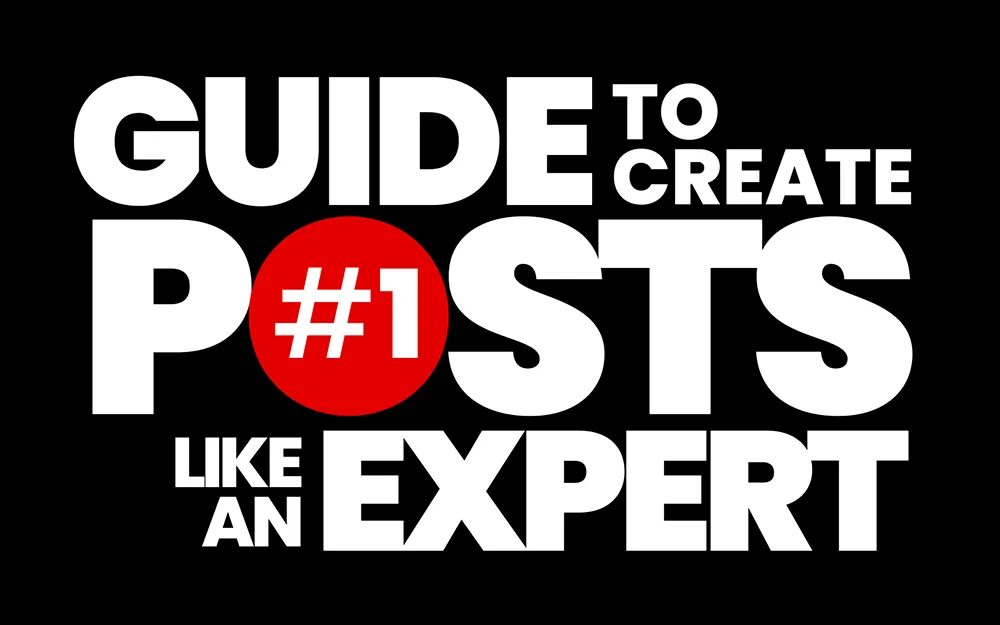
THIS GUIDE WAS CREATED IN ENGLISH AND SPANISH
During these months at Hive I have realized that there is a lot of confusion on fundamental aspects of post structure. Knowing how to handle content that is not of our authorship, looking for images in the right places, how credits should be given, citing sources, and what the links are for, are some of the aspects that many users do not fully understand or are confused when using them. It is not anyone's fault in this situation, but as Hive has its particular characteristics and one of its premises is the search for quality and original content, it is important that we make corrections to what should be a more neat and professional process of creating our posts.
What follows is based on my experience of more than 20 years as a graphic designer expert in the creation of editorial material and as a social communicator (journalist), specialized in the editorial area. During my career, I have been involved in the correction of texts and styles of countless books, magazines, and newspapers. Likewise, I have designed and laid out countless covers, books, e-books, web pages, institutional publications, profiles of transnational companies, annual reports, books, magazines, weeklies, newspapers, bulletins, newsletters, whitepapers, infographics, manuals, proposals, presentations, in short, practically all kinds of editorial and advertising documents, so that the management of information and the parts that make up all types of publications is something normal in my day to day work.

Collage of some designs that I created for my clients. If you want to know more about my work, visit my profile at Upwork.
First of all, due to the length of this guide, I leave you the list of the content covered so that you can quickly go to the topic that is of most interest to you. However, I invite you to read the whole post because that way you will get a greater benefit and understanding of each concept.
1 • HIVE: A WRITER-GENERATING BLOCKCHAIN
When we join Hive we immediately become content creators and, although we don't create it, at the same time we assume practically the same responsibilities of a professional writer or journalist. The above statement is due to the fact that the process of creating a post and its subsequent publication is very similar to the way we approach the creation of a book or a news item, but if we do not have the right tools we can face many disadvantageous situations due to inexperience or ignorance. To start this guide off on the right foot, the first thing we must understand is that what we publish is tacitly a work of ourselves and therefore, just like the great writers or journalists, we are the only ones responsible for what we write or what we fail to write.
On the other hand, unlike writers and journalists, content creators on Hive (at least the vast majority) do not have specialized editors at their disposal to correct their typos, improve the syntax of their sentences or sublimely embellish the style of their writing. But beyond these spelling, grammatical and literary details, content creators in Hive do not have someone to guide them in the correct handling of material not created by them or to put the finishing touches and polish the work with all sorts of elements that many go unnoticed. Therefore they must research within Hive and outside of Hive to acquire that knowledge.
2 • AN ETHICAL STANDARD FOR HIVE
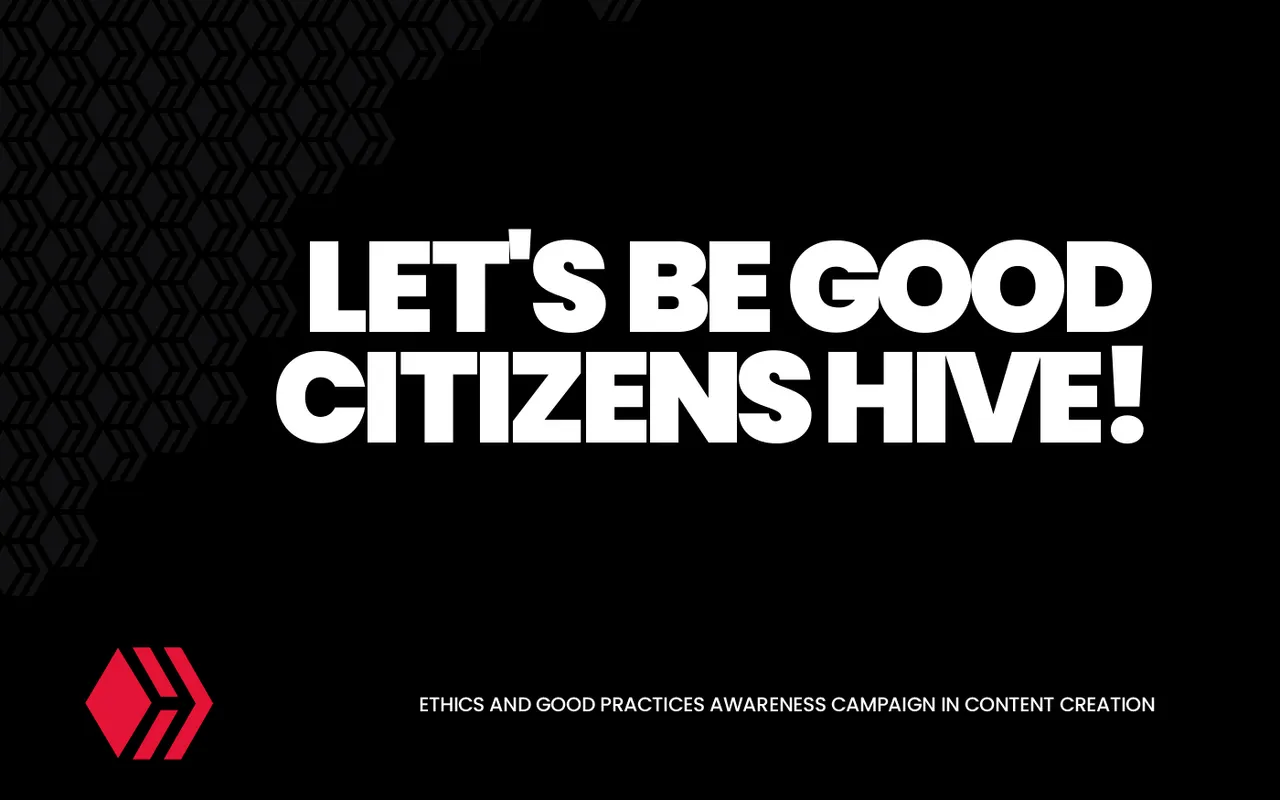
This is my small contribution in favor of a Hive with citizens based on ethics and transparency. By @charsdesign
While I do not claim that this guide is going to create expert content creators, at least I hope that in some way this will strengthen what should be the ethical standard of Hive, that it will help many in understanding exactly what each concept is and encourage good practices throughout the process.
A fundamental rule for any content creator is to know how to cite authors and sources. At Hive this is crucial because what we are supposed to be looking for is the creation of original content and from there we expect to reap rewards. When authors or sources are not properly cited there can be cases of abuse of the system. What is the abuse of the system? It is using other people's text and images and profiting from them by passing them off as your own. To give credit is to give fair recognition to the person or institution that did an important work of creation. Appropriating something we did not create is an infamous and unfair action for the true creator. Let's be good citizens of Hive!
3 • COPYRIGHT
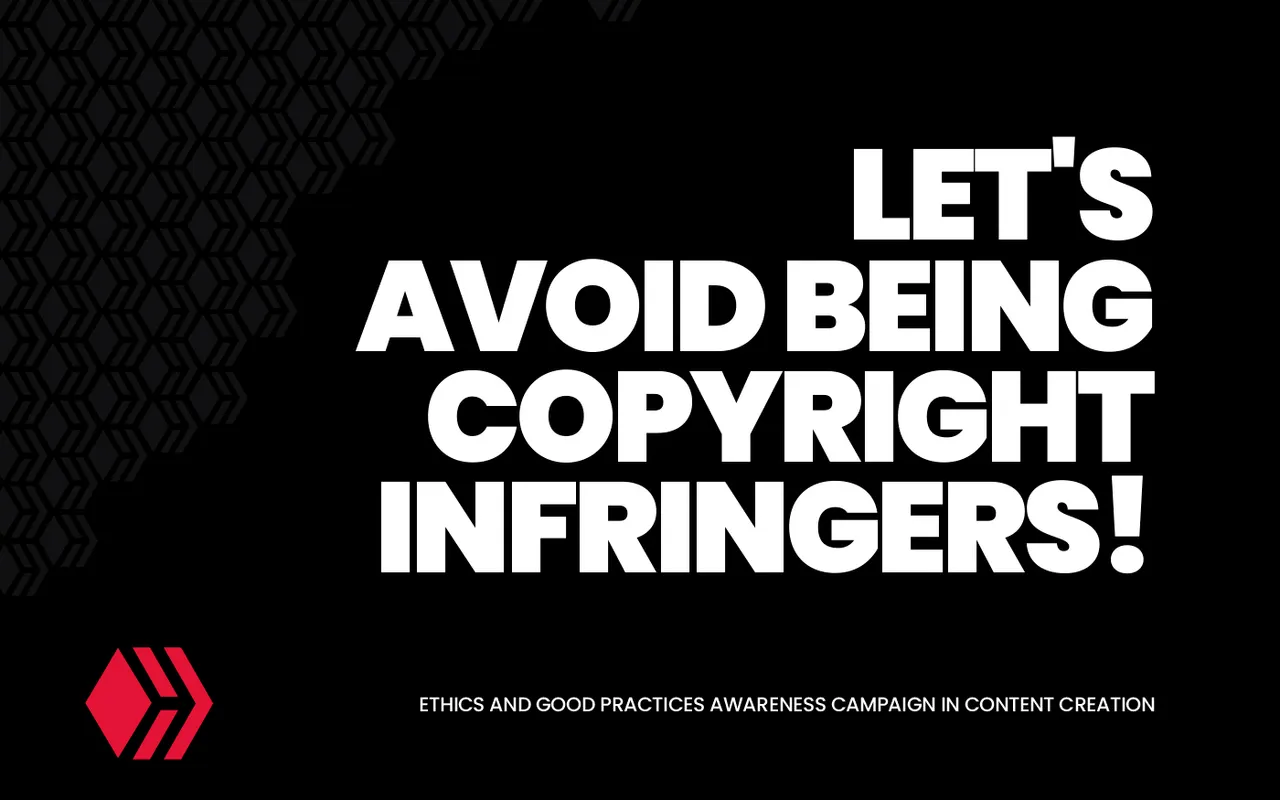
By @charsdesign
When someone creates a piece of art, whether it is a drawing, a painting, a piece of music or a story, that person has absolute copyright over that piece. That is to say, the creator is the one who decides who, how, where, when, why, and for what purpose can use his work. It is he who decides if he wants his name to appear or not in a credit or if he wants a pseudonym instead. Let's remember that infringing any of these rights can have consequences, even legal ones.
4 • ATTRIBUTION OF CREDITS

By @charsdesign
An editorial project involves many people, entities, factors, or elements that help in the creation process and it is necessary to make the corresponding citation to give recognition in each case. On the Internet, it is very common to notice that images or texts are used infringing rights by not correctly attributing the sources and creators of these pieces. Many times these infringements are based on ignorance, but as content creators, in Hive, we must be very attentive and avoid being part of the long list of infringers.
5 • To whom we must attribute
• Authors
• Sources
• Qualified personnel
• tools and specialized software
• Location or infrastructure
• Acknowledgments
6 • Characteristics of credit attribution
- They must be timely. It is useless to place a credit at the wrong time.
- They must be legible. The names of authors, sources and other data must be easy to read and understand.
- They must comply with the rules. Textual quotations must follow rules and the great majority of images have different types of licenses with precise specifications for their correct use.
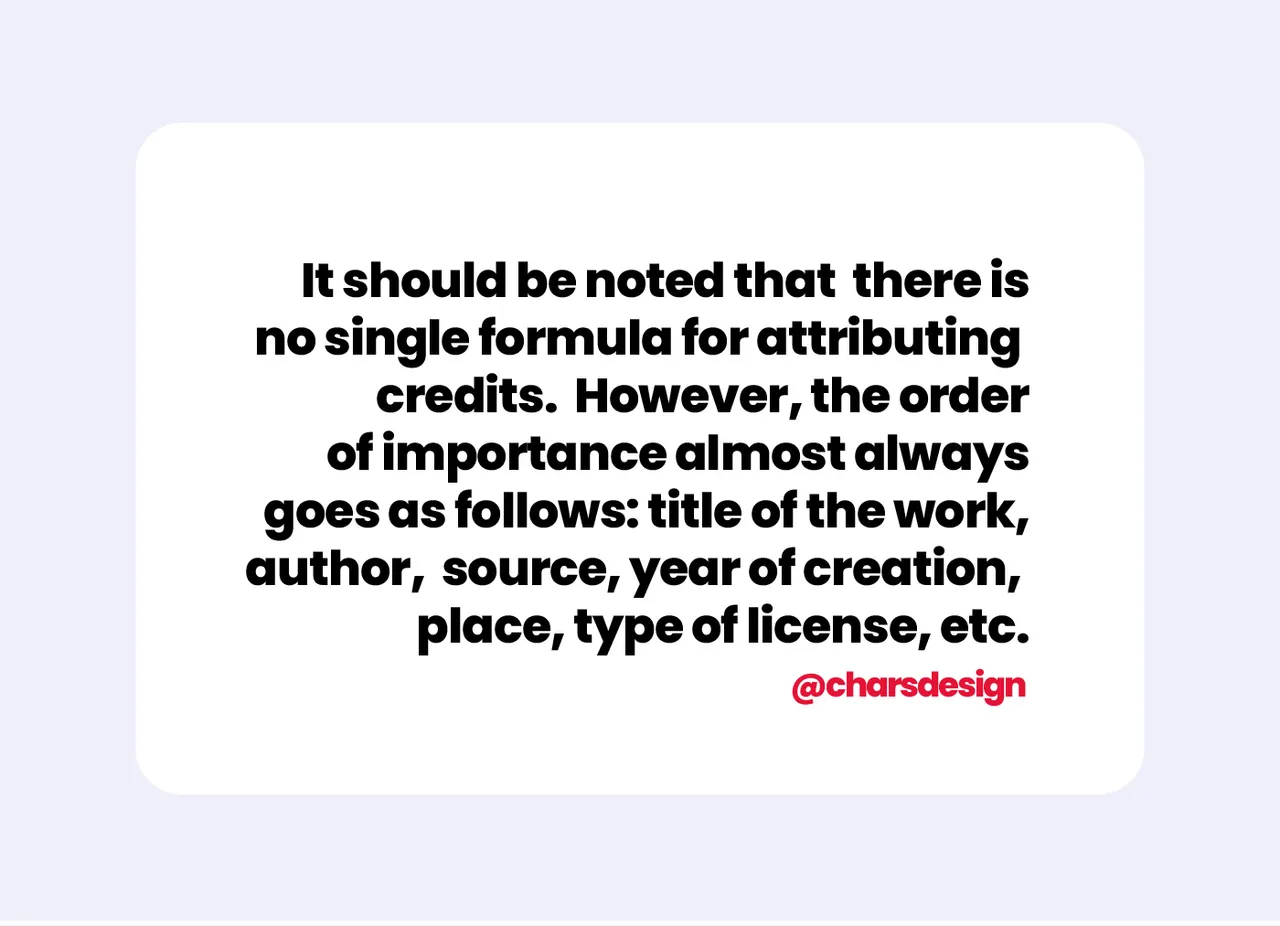
7 • SOURCES
The vast majority of content creators are not erudite, so in order to generate their publications they must go through a thorough research process that forces them to use reference sources and this often takes some time. In the case of large publications, the process can take years because, in order for the writer to reach the final conclusion or topic of the publication, he or she must study and analyze all kinds of material. Sources can come from an infinite number of places, they could be documents, books, magazines, newspapers, memos, letters, movies, documentaries, people, and more recently the largest information network in the history of mankind: the Internet.
8 • Confusion between sources and authors
This is where most of us can get confused. A source is potentially an author, that is, when we literally use written material from a source, that material must bear the author's credit, as is the case with quotations. It is also very important to understand that paraphrasing, summarizing, or otherwise using text from the source by changing certain parts of it is also considered authored material and should therefore carry an author credit immediately following such material.
If, on the other hand, we use the material for inspiration or to find certain data, but without using the exclusive ideas or premises of that source at all, then we can credit the source at the end of the publication.
Let's take as an example that we are going to make a post about an analysis of the story The Little Prince. Our source of consultation is undoubtedly the story and the most usual way to give credit in this situation would be at the end of the post as follows:
Source: The Little Prince. Story written by Antoine de Saint-Exupéry.
Now, let's think that instead of doing an analysis, we are going to use a small phrase from that book because it is perfect for the post we want to publish and then we extract the fragment we want identically to the original and in that case already the type of credit and the place where we are going to place it changes radically because the textual quotations must carry the author credit immediately after the quote and then it could look like this:
"Once when I was six year old I saw a beautiful picture in a book about the primeval forest called True Stories. It showed a boa constrictor swallowing an animal."
Excerpt from the story The Little Prince written by Antoine de Saint-Exupéry.
We must define the source correctly, as in the previous example we have copied the text directly from the book, then we can say that source and author are the same, but if we get the book on the Internet, then the source becomes the site where we got the book. In this case we can include the source in the credit attribution immediately after the author or leave the citation with only the author credit as in the previous example and place the source at the end of the publication. Let's look at both cases:
"Once when I was six years old I saw a beautiful picture in a book about the primeval forest called True Stories. It showed a boa constrictor swallowing an animal."
Excerpt from the story The Little Prince by Antoine de Saint-Exupéry.
Downloaded from books.google.co.ve
"Once when I was six years old I saw a beautiful picture in a book about the primeval forest called True Stories. It showed a boa constrictor swallowing an animal."
Excerpt from the story The Little Prince written by Antoine de Saint-Exupéry.
Lorem ipsum dolor sit amet, consectetuer adipiscing elit, sed diam nonummy nibh euismod tincidunt ut laoreet dolore magna aliquam erat volutpat. Ut wisi enim ad minim veniam, quis nostrud exerci tation ullamcorper suscipit lobortis nisl ut aliquip ex ea commodo consequat. Duis autem vel eum iriure dolor in hendrerit in vulputate velit esse molestie consequat. End of post. Source of the quotation from the story The Little Prince: books.google.co.ve In the case of images, there is also a lot of confusion because the source is being misinterpreted by the author. In these cases, the source of consultation is the site where we get the image, but we must be very clear that in the vast majority of cases, the source is not the creator of these images so we must be attentive. (See Chapter 16 - Where and how to place image credits) cesarsway.com is a website INCORRECT: Copying information from a non-specialized site such as OneSocialMedia.com for the creation of a post about dogs, when most likely that information had been copied from a specialized site such as CesarsWay.com and in the end giving the citation to OneSocialMedia.com. CORRECT: The post creator goes directly to the specialized site or source, in this case, CesarsWay.com, and copies from there the information he requires in addition to all the necessary data for the granting of credits. INCORRECT: avoid at all costs only placing the word source even if it is a link to the download source of the image. CORRECT: there are many different ways of attributing, but in general, the image banks themselves have their own pre-established formats so that you can attribute in the correct way. However, what is essential in any case is that the author's name appears. In example 1, the Search.CreativeCommons.org page has the following format: between quotation marks is the title given to the photo, then the author's pseudonym and finally, there is an indication of the type of image license. In example 2, the page FreePik.com is at the same time the creator and source of the image and its form of attribution is placing first the title of the image, its name as creator, and then the link to its page. INCORRECT: a list of links alone says nothing. CORRECT: cite correctly by placing the word source and then place the names of the sources. In the case of Internet sites, use the following code to generate the link in an attractive way. You only need to change the red text for your information. Author credits are the acknowledgements made to the real authors of certain information, text, thought, photograph, illustration and, in general, to any artistic, informative or scientific work. Credits are important because with them we can know who was the creator of this or that work. If not, just ask Beyoncé, J. K. Rowling or Jeff Koons, to name three great artists of recent times. In the case of Beyoncé, most will have no trouble identifying her as a singer, but in the case of J. K. Rowling, despite being a world-renowned writer for the Harry Potter saga, many will not know that she has published books under the pseudonym Robert Galbraith. And in the case of Jeff Koons, few will know that he is the world's most sought-after sculptor. The works of each of these artists have a particular stamp and I am sure that none of them would give up their copyrights and that is why each of their works bears the credit of its author. INCORRECT: Unless the source and creator are the same, placing only the source is an incorrect way to attribute credit. CORRECT: Remember that there is no one way to attribute, but in this case, starting with the author credit is perfect. Sometimes it is necessary to start with the title of the work but never start with the source credit unless the source and author are the same. Credits should be placed in a timely manner to prevent our readers from thinking that the material they are viewing is ours. In the strict case of Hive, as in any other media, author credits should never be placed at the end of the publication. The reason is very simple because, from start to finish, the reader assumes that whoever wrote and created the entire post was the one who published it. A verifiable way of verifying this premise is by asking the following questions: When have you ever read an opinion article or a news item without knowing beforehand who wrote those lines? When have you ever seen a movie without knowing from the beginning the names of the directors, producers, and protagonists? When have you ever seen a painting in a museum without the name of the artist? That's why, my friends, placing supposed credits at the end of a publication can seem like a dishonest strategy because the vast majority of people don't read those details. And they don't read them because many times the last lines or images look like repetitive details or because they look like quite technical details and they don't give importance to it. At the end of the publications should be placed the references, the sources consulted and the footnotes, as well as the ratification that all the content of our post is our own and no one else's. Let's see below each possible situation where an author credit should be placed: In this topic, I am not going to make a dissertation of the types of images that exist according to their legal category of use because I have already seen other posts that have covered this matter. Instead, I prefer to be quite specific on how to proceed in the search, choice, and manipulation of visual material because at the end of the day the important thing is that we understand what is right, what is wrong, that we know how to cite the authors and where to get what we need. DO NOT USE IMAGES FROM ANY SITE ON THE INTERNET. For some reason using images from any site seems to be another widespread practice in Hive, but unfortunately, it is not the right way. The right thing to do is to look at sites that are recognized image repositories or image distribution banks. These sites are where you will get all the information related to the visual work. INCORRECT: The normal thing is that AnySite.com on the Internet has downloaded for its use images from AnyImagesBank.com, but the Post Creator unknowingly uses the image of AnySite.com, which of course does not contain any data on rights or credits. In the end, the creator credits AnySite.com as the source and this is not correct. CORRECT: The Post Creator goes directly to AnyImagesBank.com and downloads from there the image he requires plus all the necessary data for crediting. This warning is important to make because as I mentioned before, there are works that may be restricted in their use by copyright. So if you mistakenly use one of these pieces that are protected by exclusive copyrights, you could get into legal trouble. Please, see the infographic in item 8, Unverified or inadequate source. Google is very clear when it gives us the WARNING when we search for any image. FREE USE LICENSE DOES NOT MEAN THAT YOU DO NOT CREDIT. It is also important to emphasize that the fact that some pieces have a Free Use License does not mean that you can use them without citing the authors or their corresponding sources. Be very careful with disclaimers. The general rule is that you must attribute their authors. It is true that some websites offer free-to-use images that do not oblige the user to place credits if the image will be used for non-commercial purposes. However, they also warn that even though there is no obligation, it would be very important for them if you give the corresponding credit. In this aspect we must put ourselves in the authors' shoes and think that if we had created those images we would also have preferred to get the credit. If we are going to take advantage of a resource that we do not have to pay for and that will give value to our post, why not cite the author and the source? This is what I call the moral and ethical duty in Hive. ALL IMAGES, EVEN IF THEY HAVE BEEN PAID, SHOULD BE CREDITED. Here I want to make an aside based on my experience. As a graphic designer I have created covers for countless publications; I have designed and laid out magazines and newspapers; I have even designed and developed web pages; and, although I have been paid for those works, I expect to see my name in the credit area of those publications and I would never give them up any more than Beyoncé, J. K. Rowling or Jeff Koons. That is to say, even if we pay monthly to an image bank to use images, this does not mean that we can pass them off as our own. I think that, although it is not legally obligated to credit those paid images, there is an ethical and moral obligation with the original authors and with all the other users of Hive. As everything we publish here is valued and rewarded due to originality, it is important that we give credit because in the end, we must be very honest in admitting that we are not the authors of certain images or texts. All infographic designs are of my authorship. GUÍA EN ESPAÑOL Antes que nada, debido a lo largo de esta guía, les dejo la lista del contenido tratado para que puedan ir con rapidez al tema que sea de mayor interés para ustedes. Sin embargo, los invito a leer todo el post porque de esa manera obtendrán un mayor beneficio y comprensión de cada concepto. Cuando nos unimos a Hive inmediatamente nos convertimos en creadores de contenido y aunque no lo creamos, al mismo tiempo asumimos prácticamente la mismas responsabilidades de un escritor o periodista profesional. La afirmación anterior se debe a que el proceso de creación de un post y su posterior publicación es muy parecido a la forma en que se aborda la creación de un libro o una noticia, pero si no contamos con las herramientas adecuadas podemos enfrentar muchas situaciones desventajosas debido a la inexperiencia o ignorancia. Para empezar con buen pie esta guía, lo primero que debemos comprender es que lo que publicamos es de manera tácita una obra de nosotros mismos y por consiguiente, al igual que los grandes escritores o periodistas somos los únicos responsables de lo que escribimos o de lo que dejamos de escribir. Por otro lado, a diferencia de los escritores y periodistas, los creadores de contenido en Hive (por lo menos la gran mayoría) no tienen a su disposición editores especializados que se encarguen de corregir sus gazapos, mejorar la sintaxis de sus oraciones o de adornar de manera sublime el estilo de su redacción. Pero más allá de estos detalles ortográficos, gramaticales y literarios, los creadores de contenido en Hive no tienen a alguien que los guíe en la manipulación correcta del material no creado por ellos o que se encargue de dar los toques finales y de pulir la obra con toda clase de elementos que muchos pasan desapercibidos. Por lo tanto deben investigar dentro de Hive y fuera de ella para adquirir ese conocimiento. Aunque no pretendo que esta guía vaya a crear expertos creadores de contenido, al menos espero que de algún modo esto fortalezca lo que debería ser la norma ética de Hive, que ayude a muchos en la comprensión exacta de cada concepto y a fomentar las buenas prácticas en todo el proceso. Una regla fundamental para cualquier creador de contenido es saber citar autores y fuentes. En Hive esto es crucial porque se supone que lo que buscamos es la creación de contenido original y de allí esperamos obtener recompensas. Cuando no se citan los autores o las fuentes de manera adecuada pueden darse casos de abusos del sistema. ¿Qué es abusar del sistema? Es usar textos e imágenes de otras personas y obtener ganancias de ello haciéndolas pasar como propias. Otorgar créditos es darle el justo reconocimiento a la persona o institución que hizo un importante trabajo de creación. Apropiarnos de algo que no creamos es una acción infame e injusta para el verdadero creador. ¡Seamos buenos ciudadanos de Hive! En un proyecto editorial intervienen muchas personas, entes, factores o elementos que ayudan en el proceso de creación y es necesario hacer la cita correspondiente para dar reconocimiento en cada caso. En internet es muy común notar que se usan imágenes o textos infringiendo derechos al no atribuir correctamente a las fuentes y a los creadores de esas piezas. Muchas veces estas infracciones son basadas en la ignorancia, pero como creadores de contenido en Hive debemos estar muy atentos y evitar ser parte de la larga lista de infractores. • Autores La gran mayoría de creadores de contenido no son eruditos, de modo que para generar sus publicaciones deben pasar por un proceso de investigación minucioso que los obliga a usar fuentes de consulta y esto con frecuencia toma algún tiempo. En el caso de las grandes publicaciones el proceso puede tomar años porque para que el escritor llegue a la conclusión o tema final de la publicación debe estudiar y analizar material de todo tipo. Las fuentes pueden provenir de infinidad de sitios, podrían ser documentos, libros, revistas, periódicos, memos, cartas, películas, documentales, personas y más recientemente la red de información más grande de toda la historia de la humanidad: internet. Es aquí donde casi todos nos podemos confundir. Una fuente es en potencia un autor, es decir, cuando usamos literalmente el material escrito de una fuente, ese material debe llevar el crédito de autor como es el caso de las citas. Además es importantísimo entender que parafrasear, resumir o de alguna forma usar texto de la fuente cambiando ciertas partes, también se le considera como material de autor y debe llevar por consiguiente su crédito como autor inmediatamente después de dicho material. Si por el contrario, usamos el material como inspiración o para hallar ciertos datos, pero sin usar en absoluto las ideas o premisas exclusivas de esa fuente, entonces podemos atribuir el crédito como fuente de consulta al final de la publicación. Pongamos como ejemplo que vamos a hacer un post sobre un análisis del cuento El Principito. Nuestra fuente de consulta es sin duda el cuento y la forma más habitual para otorgar el crédito en esta situación sería al final del post de la siguiente manera: Fuente: El Principito. Cuento escrito por Antoine de Saint-Exupéry.
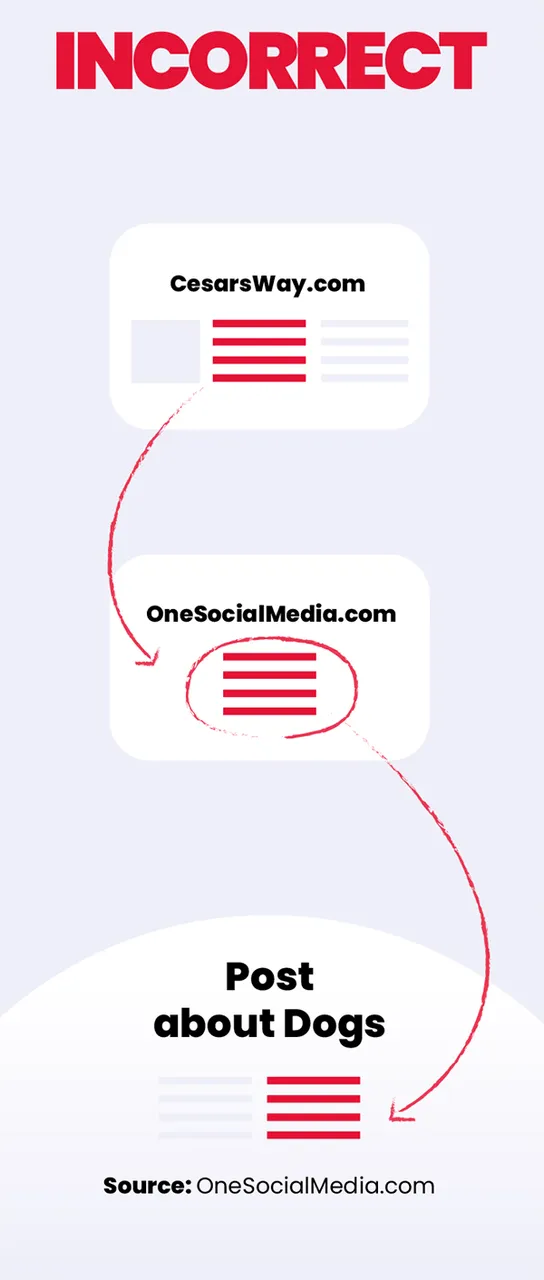
of the famous dogs expert, César Millán. 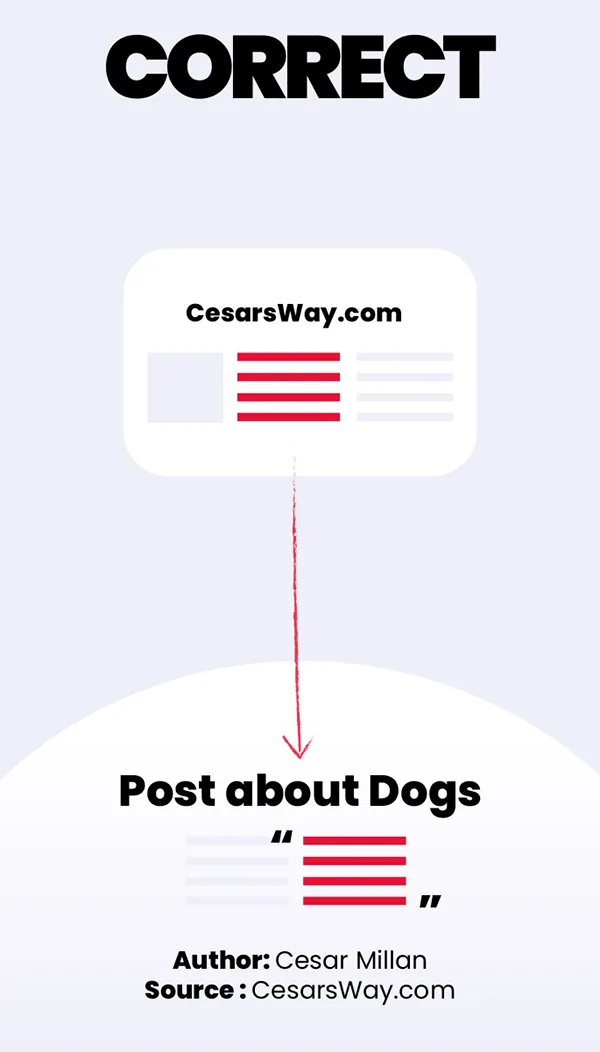

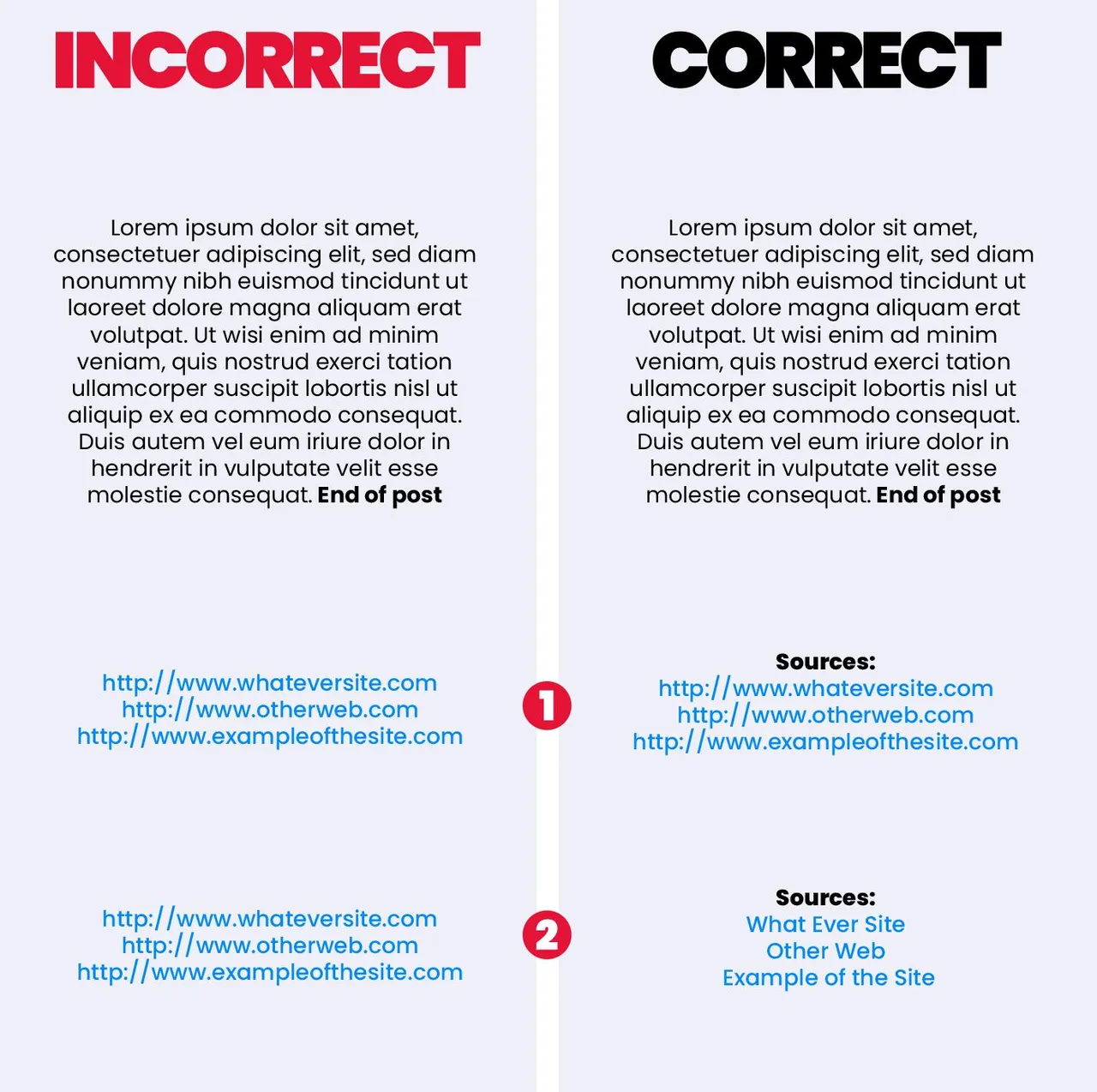

10 •
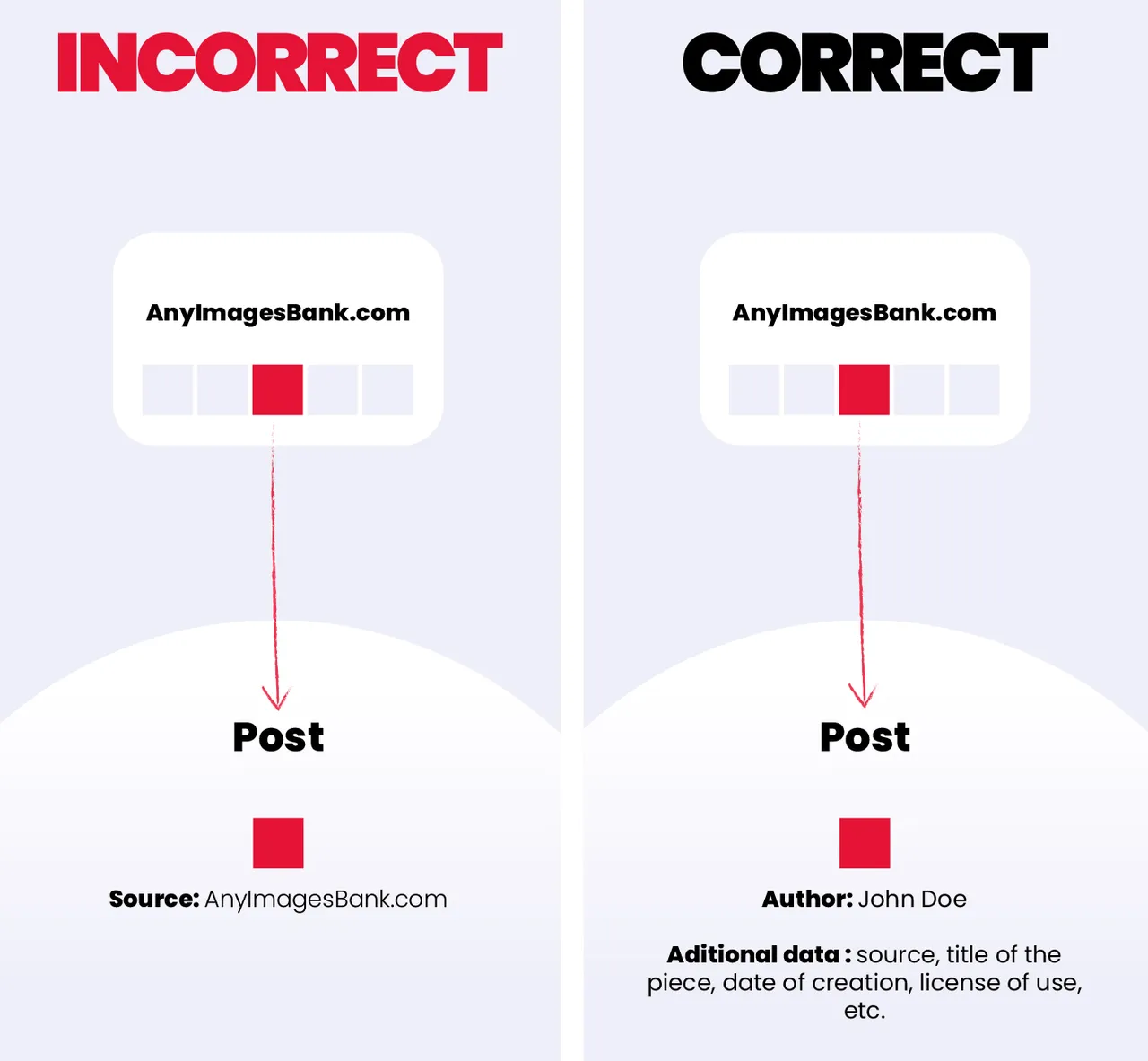
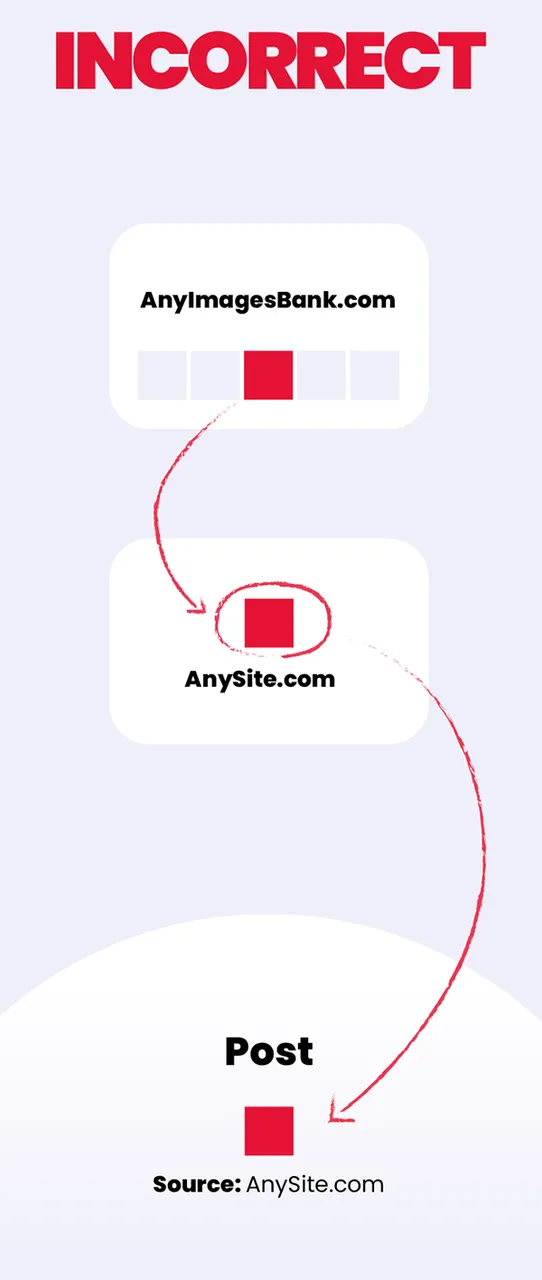
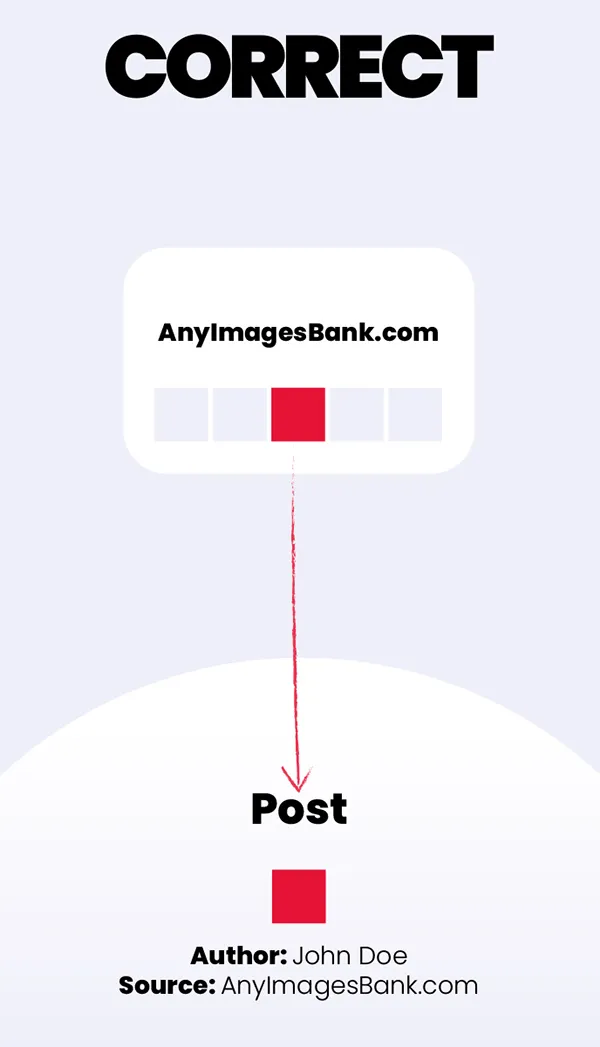
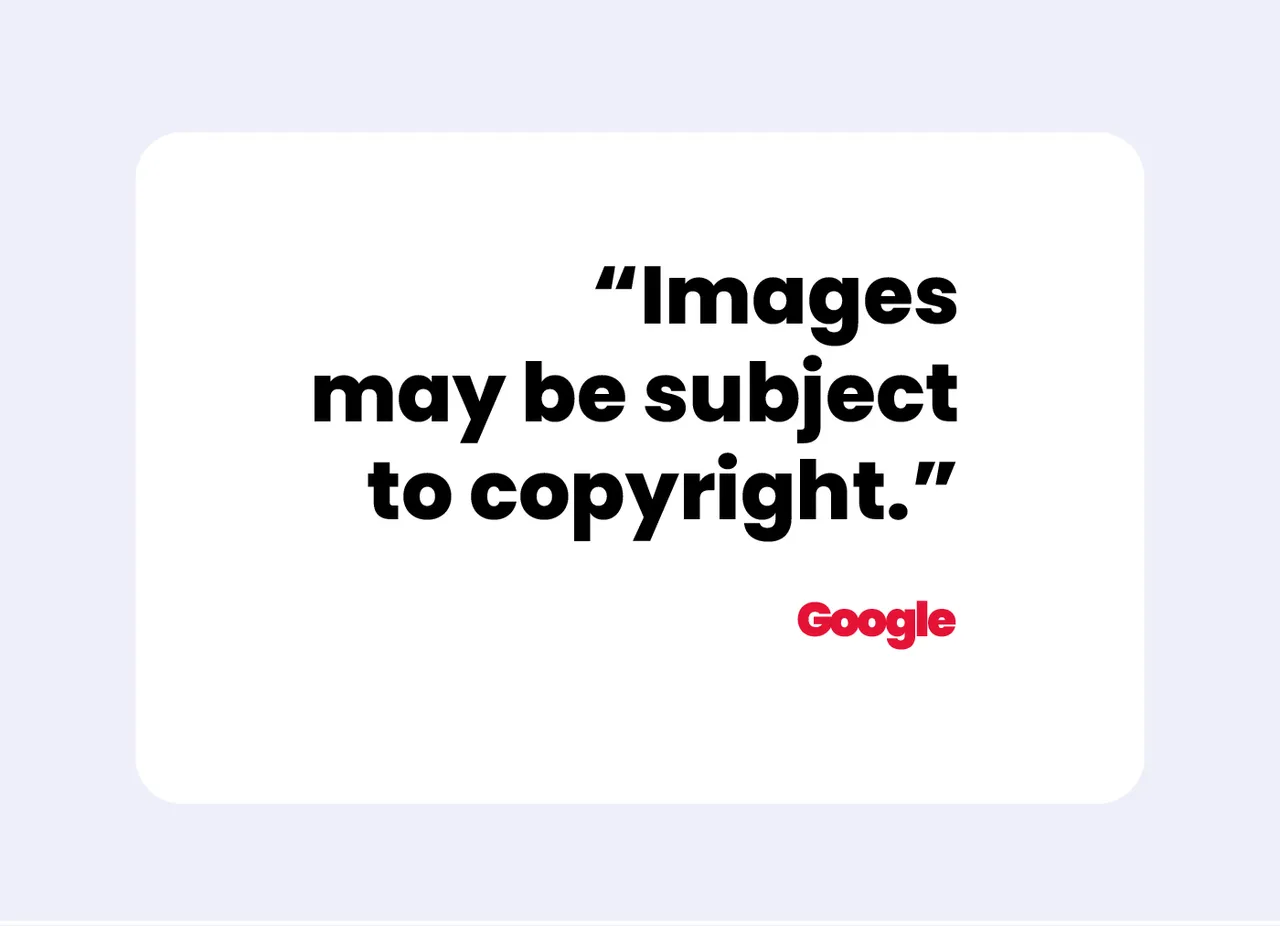
In the next post I will tell you about the best sources of FREE IMAGES other types of credit attribution and other more topics in creating quality posts.
I believe that making a post in the right way is doubly beneficial. This greatly facilitates the work of the curators and the content creator could get better rewards because in the end his work will be better valued for doing things correctly.
I hope this post will be a great tool in creating your next post, and if you have any comments or questions I will be happy to share my experience as much as possible.

Camera: Canon EOS 40D
Infographics: Adobe Illustrator
Image edition: Adobe Photoshop
Sources: Google • search.creativecommons.org • freepik.com • Unsplash.com • www2.unavarra.es
Translation: DeepL
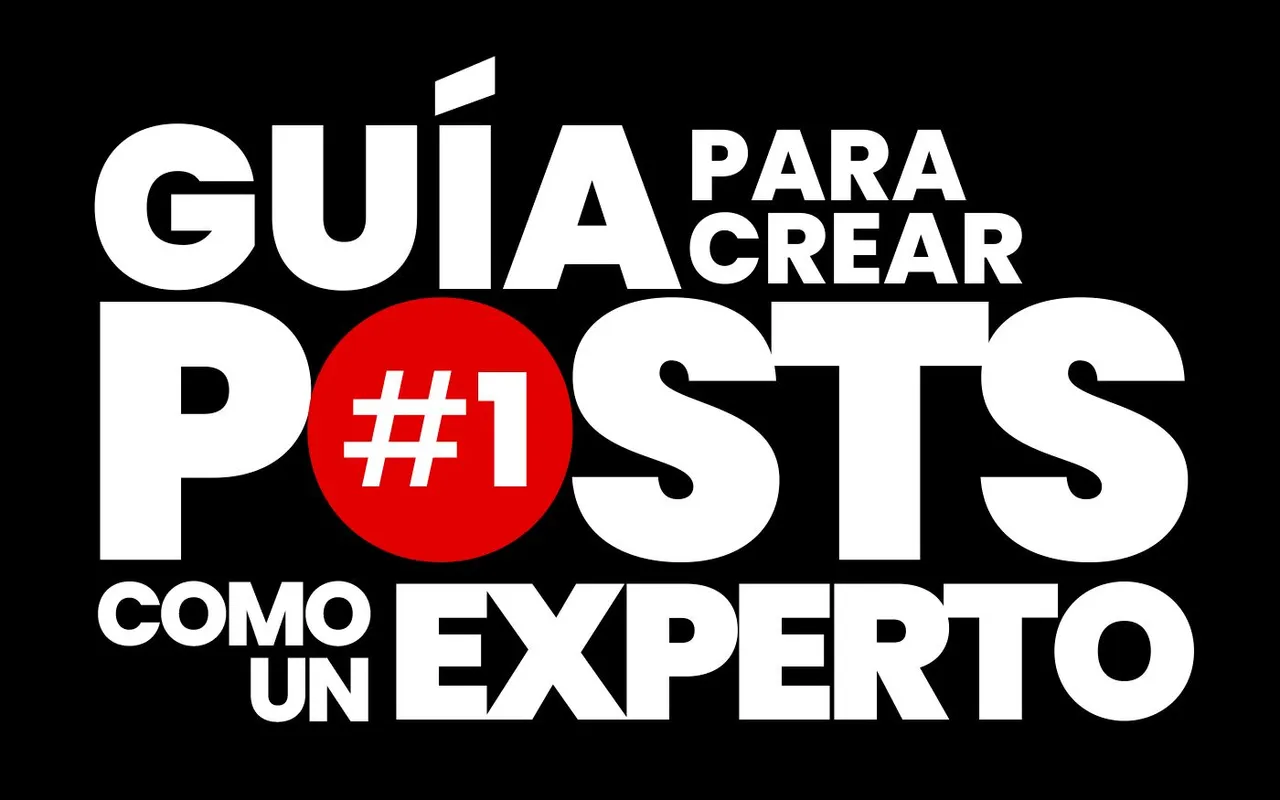
Durante estos meses en Hive me he dado cuenta de que existe una confusión muy grande en aspectos fundamentales de la estructura de un post. El saber manejar el contenido que no es de nuestra autoría, buscar imágenes en los lugares correctos, cómo se deben otorgar créditos, citar las fuentes y para qué son los links, son algunos de los aspectos que muchos usuarios no comprenden totalmente o se confunden al momento de usarlos. No es culpa de nadie esta situación, pero como Hive tiene sus características tan particulares y una de sus premisas es la búsqueda de contenido de calidad es importante que hagamos correcciones a lo que debe ser un proceso de creación más prolijo y profesional de nuestros posts.
Lo que viene a continuación está basado en mi experiencia de más de 20 años como diseñador gráfico experto en la creación de material editorial y como comunicador social (periodista), especializado en el área editorial. Durante mi carrera he sido partícipe en la corrección de textos y estilos de innumerables libros, revistas y periódicos. Así mismo, he diseñado y diagramado incontables portadas, libros, e-books, páginas web, publicaciones institucionales, perfiles de compañías transnacionales, reportes anuales, libros, revistas, semanarios, periódicos, boletines, newsletters, whitepapers, infografías, manuales, propuestas, presentaciones, en fin, prácticamente toda clase de documento editorial y publicitario, de modo que el manejo de información y las partes que componen todo tipo de publicación es algo muy normal en mi trabajo del día a día.

Collage de algunos diseños que he creado para mis clientes. Si quieres saber más sobre mi trabajo, entra en mi perfil en Upwork.
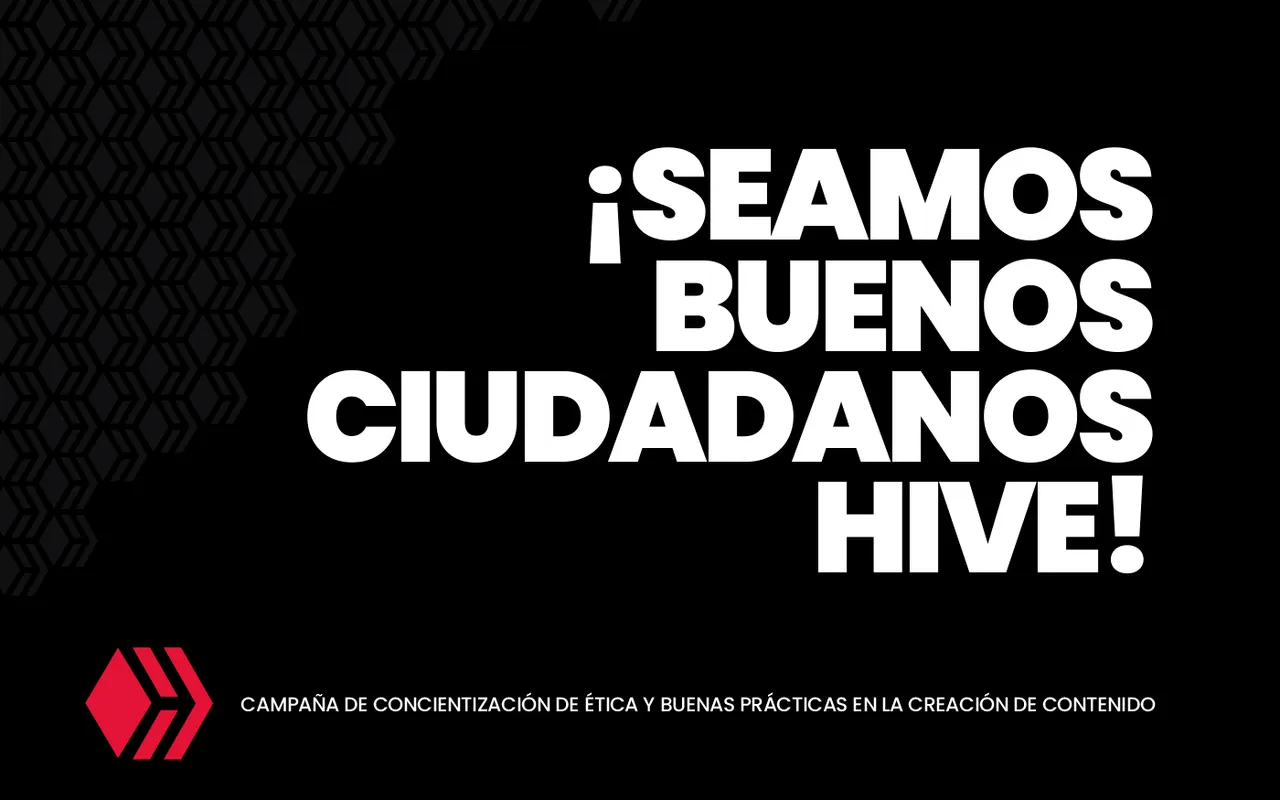
Un pequeño aporte a favor de una Hive con ciudadanos basados en la ética y la transparencia. By @charsdesign

By @charsdesign
Cuando alguien crea una pieza artística, ya sea un dibujo, una pintura, una pieza musical o un cuento, esa persona tiene los derechos de autor absolutos sobre esa pieza. Es decir, el creador es quien decide quién, cómo, dónde, cuándo, por qué y para qué, puede usar su obra. Es quien decide si quiere que aparezca o no su nombre en un crédito y si por lo contrario desea un pseudónimo en cambio. Recordemos que infringir alguno de estos derechos puede acarrear consecuencias, incluso legales.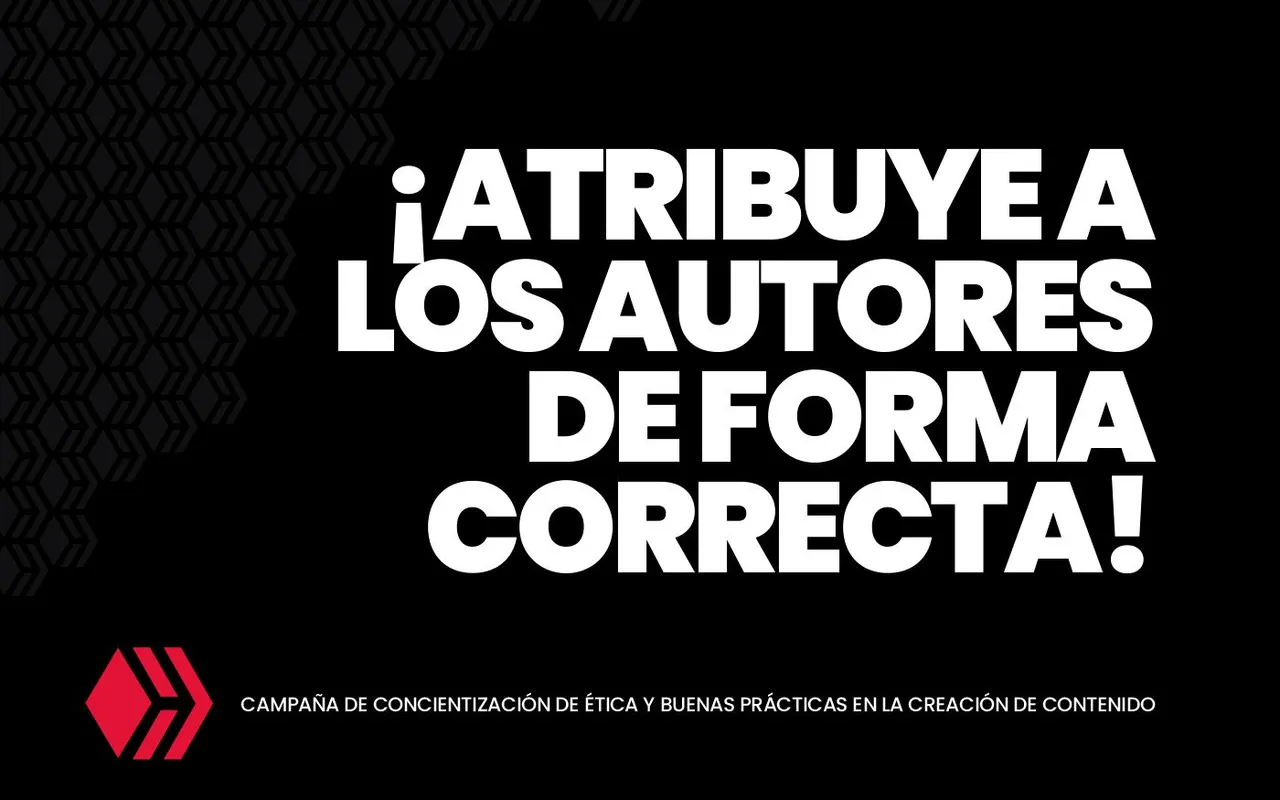
By @charsdesign
• Fuentes de consulta
• Personal cualificado
• Herramientas y software especializado
• Locaciones o infraestructuras
• Agradecimientos

7 •
Ahora bien, pensemos que en vez de hacer un análisis, vamos a usar una pequeña frase de ese libro porque es perfecta para el post que queremos publicar y entonces extraemos el fragmento que deseamos de forma idéntica al original y en ese caso ya el tipo de crédito y el sitio donde lo vamos a colocar cambia radicalmente porque las citas textuales deben llevar el crédito de autor inmediatamente después de la cita y entonces podría quedar así:
“¡Ah, mi pequeño amigo, cómo he ido comprendiendo
lentamente tu vida melancólica! Durante mucho tiempo tu
única distracción fue observar la dulzura de los
atardeceres. ”
Extracto del cuento El Principito escrito por Antoine de Saint-Exupéry
Hay que definir la fuente correctamente, como en el ejemplo anterior hemos copiado el texto directamente del libro, entonces podemos decir que fuente y autor son el mismo, pero si conseguimos el libro en internet, entonces la fuente pasa a ser el sitio donde conseguimos el libro. En este caso podemos incluir la fuente en la atribución de créditos inmediatamente después del autor o dejar la cita sólo con el crédito de autor como en el ejemplo anterior y colocar la fuente al final de la publicación. Veamos los dos casos:
“¡Ah, mi pequeño amigo, cómo he ido comprendiendo
lentamente tu vida melancólica! Durante mucho tiempo tu
única distracción fue observar la dulzura de los
atardeceres.”
Extracto del cuento El Principito escrito por Antoine de Saint-Exupéry
Descargado de bibliotecadigital.ilce.edu.mx
“¡Ah, mi pequeño amigo, cómo he ido comprendiendo
lentamente tu vida melancólica! Durante mucho tiempo tu
única distracción fue observar la dulzura de los
atardeceres.”
Extracto del cuento El Principito escrito por Antoine de Saint-Exupéry
Fuente de la cita del cuento El Principito: bibliotecadigital.ilce.edu.mx En el caso de las imágenes, también hay mucha confusión porque se está malinterpretando la fuente con el autor. En estos casos, la fuente de consulta es el sitio donde conseguimos la imagen, pero hay que estar muy claros que en la gran mayoría de los casos, la fuente no es la creadora de dichas imágenes por lo que deberemos estar atentos y seguros de atribuir de la manera correcta. (Ver el capítulo 16 • Dónde y cómo colocar los créditos de imágenes). cesarsway.com es un sitio web del famoso experto de perros, César Millán. INCORRECTO: Copiar información de un sitio no especializado como UnaRedSocial.com para la creación de un post sobre perros, cuando lo más probable es que esa esa información había sido copiada de una página especializada como CesarsWay.com y al final otorgarle la cita a UnaRedSocial.com. CORRECTO: El creador de post va directamente al sitio o fuente especializada, en este caso CesarsWay.com y copia de allí la información que requiere además de todos los datos necesarios para la otorgación de créditos. INCORRECTO: Evita a toda costa sólo colocar la palabra fuente aunque este sea un link a la fuente de descarga de la imagen. CORRECTO: Existen muchas formas distintas de atribuir, pero por lo general, los mismos bancos de imágenes tienen sus formatos preestablecidos para que atribuyas de la manera correcta. Sin embargo, lo imprescindible en cualquier caso es que aparezca el nombre del autor. En el ejemplo 1, la página Search.CreativeCommons.org tiene el siguiente formato: entre comillas está el título que se le dio a la foto, luego está el pseudónimo del autor y por último hay una indicación del tipo de licencia de la imagen. En el ejemplo 2, la página FreePik.es es la creadora de la imagen y su forma de atribuir es ubicando en primer lugar el título de la imagen, su nombre como creador y luego el link hacia su página. CORRECTO: cita correctamente colocando la palabra fuente y seguidamente coloca los nombres de las fuentes. En el caso de que sean sitios de internet, usa el siguiente código para generar el link de una manera atractiva como es el caso del segundo ejemplo. Los créditos de autor son los reconocimientos que se hacen a los verdaderos autores de cierta información, texto, pensamiento, fotografía, ilustración y en general a cualquier obra artística, informativa o científica. Los créditos son importantes porque con ello podemos saber quién fue el creador de tal o cual pieza. Si no, pregúntenle a Botero, Chayanne o Paulo Coehlo, sólo por nombrar tres grandes artistas de los últimos tiempos. En el caso de Chayanne, la mayoría no tendrá problemas al identificarlo como cantante, pero en el caso de Paulo Coelho, a pesar de ser un escritor prolífico, habrán muchos que no han leído al menos uno de sus libros. Y en el caso de Botero, pocos sabrán de que se trata de un gran pintor y escultor colombiano. Las obras de cada uno de estos artistas tienen un sello particular y estoy seguro de que ninguno renunciaría a su derecho de autor y por consiguiente cada una de sus obras lleva su crédito de autor. INCORRECTO: a menos de que la fuente y el creador sea el mismo, colocar sólo la fuente es una manera incorrecta de atribuir los créditos. CORRECTO: Recuerde que no hay una única manera de atribuir, pero en este caso, empezar por el crédito del autor es perfecto. A veces es necesario empezar por el título de la obra, pero nunca empiece por el crédito de la fuente, a menos que la fuente y el autor sean el mismo. Los créditos se deben colocar de manera oportuna para evitar que nuestros lectores piensen que el material que está viendo es de nosotros. En el caso estricto de Hive, así como en cualquier otro medio de comunicación, los créditos de autor nunca se deben colocar al final de la publicación. La razón es muy sencilla porque, desde el inicio hasta el final, el lector asume que quien escribió y creó la totalidad del post fue quien lo publicó. Una forma verificable de esta premisa es haciendo los siguientes cuestionamientos: ¿Cuándo ha leído un artículo de opinión o una noticia sin saber de antemano quién escribió esas líneas? ¿Cuándo ha visto una película sin saber desde el principio los nombres de los directores, productores y protagonistas? ¿Cuándo ha visto un cuadro en un museo sin el nombre del artista? Por eso amigos míos, colocar supuestos créditos al final de una publicación puede parecer una estrategia deshonesta porque la gran mayoría de las personas no leen esos detalles. Y no los leen porque muchas veces las últimas líneas o imágenes parecen detalles repetitivos o porque parecen detalles bastante técnicos y no le dan importancia al respecto. Al final de las publicaciones se deben colocar las referencias, las fuentes consultadas y las notas o pie de páginas, así como la ratificación de que todo el contenido de nuestro post es propio y de nadie más. Veamos a continuación cada posible situación en donde se amerita colocar un crédito de autor: En este tema no voy a hacer una disertación de los tipos de imágenes que existen de acuerdo a su categoría legal de uso porque ya he visto otros posts que han abarcado esta materia. En vez de eso, prefiero ser bastante específico en cómo proceder en la búsqueda, escogencia y manipulación de material visual porque al final del día lo importante es que entendamos lo que es correcto, lo que es incorrecto, que sepamos citar a los autores y en qué sitios conseguir lo que necesitamos. NO USES IMÁGENES DE CUALQUIER SITIO EN INTERNET. Por alguna razón usar imágenes de cualquier sitio parece ser otra práctica muy extendida en Hive, pero lamentablemente no es la forma correcta. Lo correcto es buscar en sitios que sean repositorios o bancos de distribución de imágenes reconocidos. En estos sitios es donde conseguirás toda la información relacionada con la obra visual. INCORRECTO: Lo normal es que CualquierSitio.com en internet haya descargado para su uso imágenes de algún BancoDeImágenes.com, pero el Creador de Post sin saberlo usa la imagen de CualquierSitio.com, la cual por supuesto no contiene ningún dato sobre derechos o créditos. Al final el creador le otorga el crédito como fuente a CualquierSitio.com y no es lo correcto. CORRECTO: El creador del post va directamente a cualquier BancoDeImágenes.com y descarga de allí la imagen que requiere además de todos los datos necesarios para la otorgación de créditos. Esta advertencia es importante hacerla porque como mencioné anteriormente, existen obras que pueden estar restringidas en su uso por los derechos de autor. De modo que si por error llegas a usar una de estas piezas que está protegida por derechos de autor exclusivos, podrías meterte en problemas legales. Google es muy claro al hacernos la ADVERTENCIA cuando buscamos cualquier imagen. LICENCIA DE USO LIBRE NO SIGNIFICA QUE NO ACREDITES. También es importante recalcar que el hecho de que algunas piezas tengan Licencia de Uso Libre, esto no significa que puedas usarlas sin citar los autores o sus fuentes correspondientes. Ten mucho cuidado con las advertencias. La regla general es que hay que atribuir a sus autores. Es cierto que algunas páginas de internet ofrecen imágenes libres de uso que no obligan al usuario a colocar los créditos si la imagen en cuestión será usada sin fines comerciales. Sin embargo, también advierten que a pesar de no haber obligatoriedad sería muy importante para ellos si otorgas el crédito correspondiente. En este aspecto debemos colocarnos en los zapatos de los autores y pensar que si esas imágenes las hubiéramos creado nosotros también hubiéramos preferido obtener el crédito. Si vamos a aprovechar un recurso que no debemos pagar y además eso le dará valor a nuestro post ¿por qué no citar al autor y la fuente? Esto es a lo que llamo el deber moral y ético en Hive. TODAS LAS IMÁGENES, AUNQUE HAYAN SIDO PAGADAS, DEBERÍAN LLEVAR CRÉDITO. Aquí quiero hacer un inciso basado en mi experiencia. Como diseñador gráfico he creado portadas de infinidad de publicaciones; he diseñado y diagramado revistas y periódicos; incluso he diseñado y desarrollado páginas web; y aunque me han pagado por esos trabajos, yo espero ver mi nombre en el área de créditos de esas publicaciones y nunca renunciaría a ellos así como no lo hacen Chayanne, Botero o Paulo Coelho. Es decir, aunque paguemos mensualmente a un banco de imágenes para usar imágenes, esto no quiere decir que esas imágenes podemos hacerlas pasar como propias. Pienso que, aunque no es legalmente obligatorio colocar los créditos a esas imágenes pagadas, si existe una obligatoriedad ética y moral con los autores originales y con todos los demás usuarios de Hive. Como todo lo que publicamos aquí es valorado y recompensado debido a la originalidad, es importante que otorguemos los créditos porque al final debemos ser bien honestos al admitir que no somos los autores de ciertas imágenes o textos. Todas las infografías fueron diseñadas por mí.
Lorem ipsum dolor sit amet, consectetuer adipiscing elit, sed diam nonummy nibh euismod tincidunt ut laoreet dolore magna aliquam erat volutpat. Ut wisi enim ad minim veniam, quis nostrud exerci tation ullamcorper suscipit lobortis nisl ut aliquip ex ea commodo consequat. Duis autem vel eum iriure dolor in hendrerit in vulputate velit esse molestie consequat. Fin del post
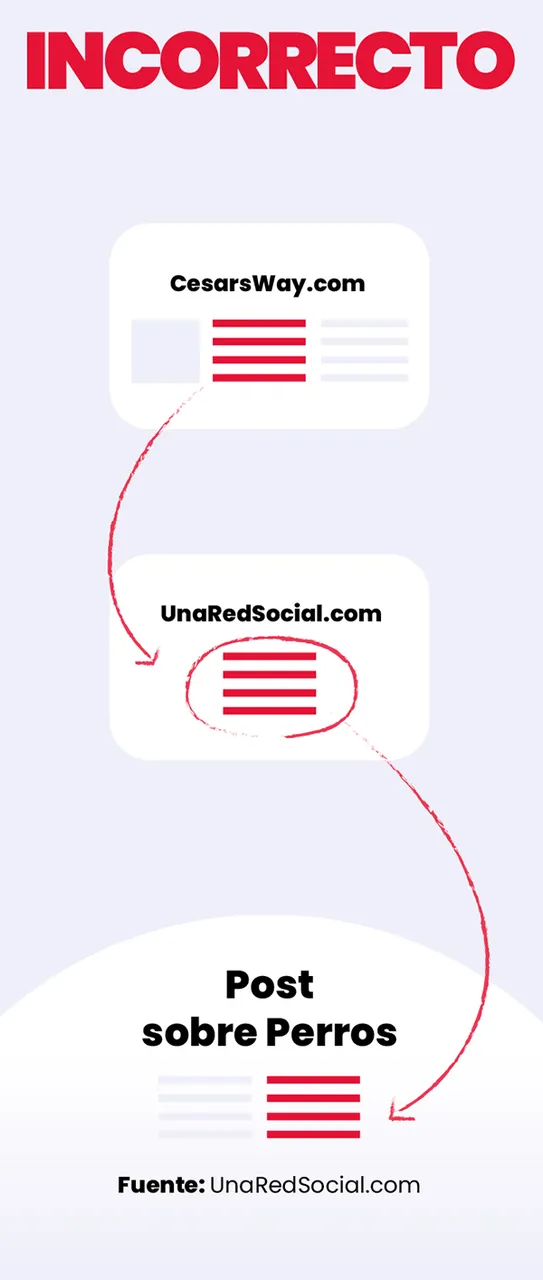
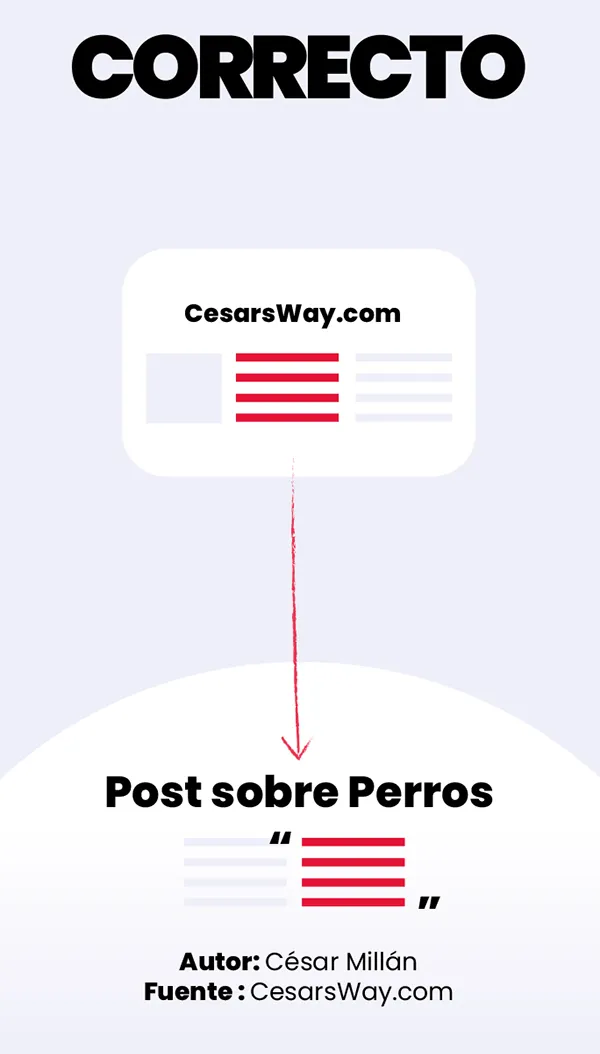
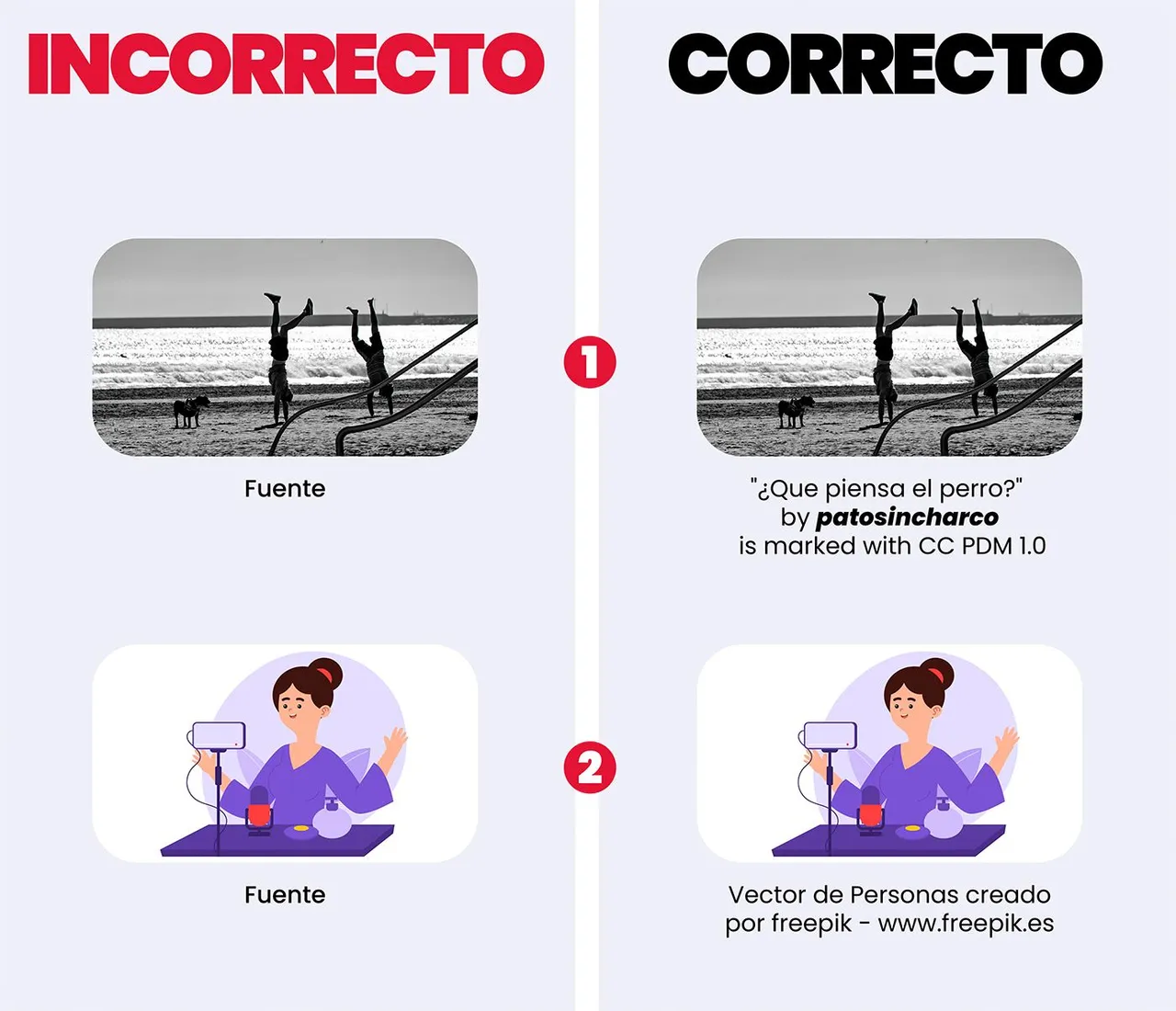
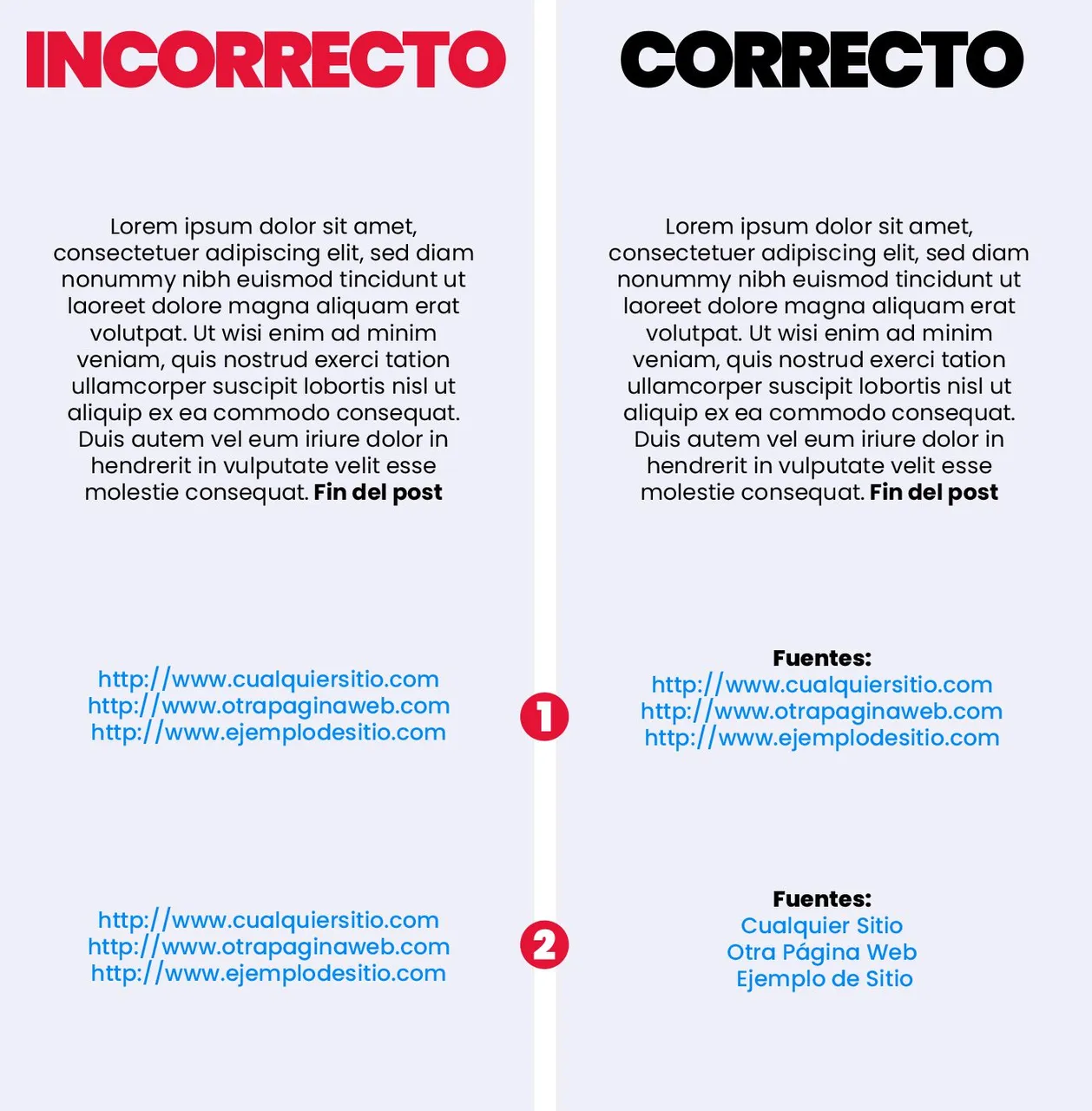
INCORRECTO: una lista de links por sí sola no dice nada.
10 •

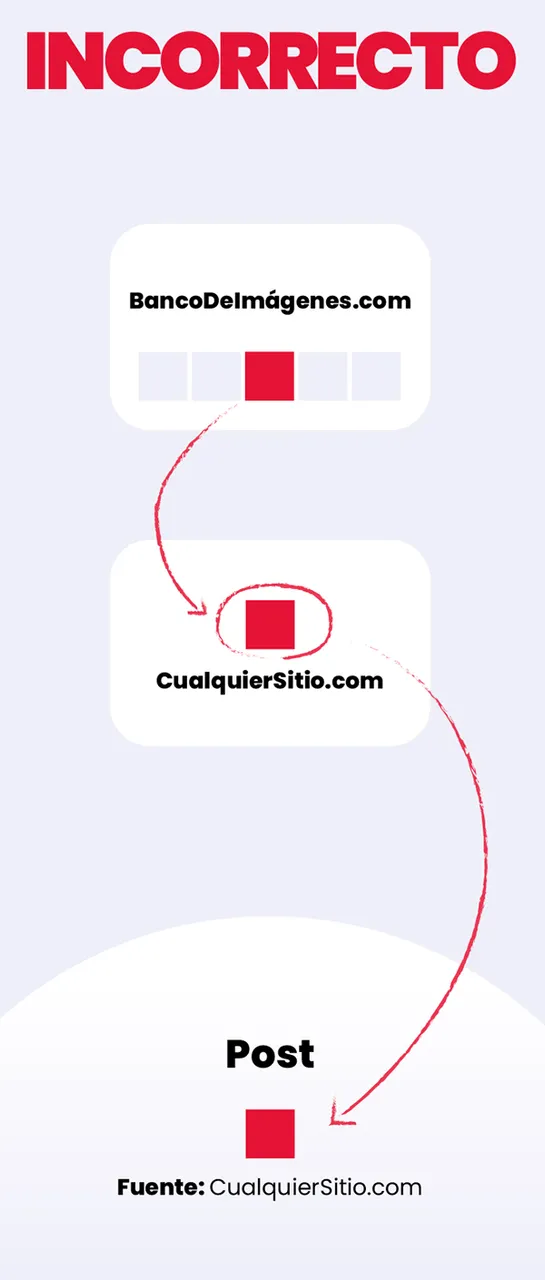
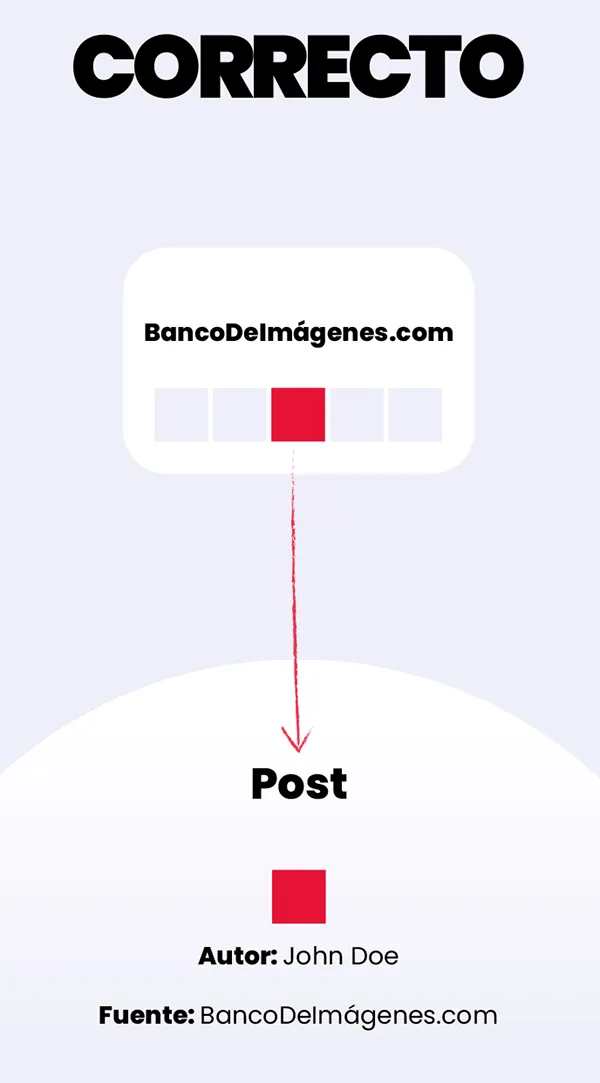

En el próximo post les hablaré de las mejores fuentes de IMÁGENES GRATUITAS otros tipos de atribución de créditos y otros temas más en la creación de posts de calidad.
Creo que hacer un post de la manera adecuada es doblemente provechoso. Esto facilita en gran medida el trabajo de los curadores y el creador de contenido podría obtener mejores recompensas porque al final su trabajo será mejor valorado por hacer las cosas correctamente.
Espero que este post sea una gran herramienta de utilidad en la creación de sus próximas publicaciones y si tienes algún comentario o duda estaré encantado de compartir mi experiencia tanto como me sea posible.

Cámara: Canon EOS 40D
Infografías: Creadas con Adobe Illustrator
Edición de imágenes: Adobe Photoshop
Fuentes: Google • search.creativecommons.org • freepik.com • Unsplash.com • www2.unavarra.es
Aplicación para traduccion: DeepL
